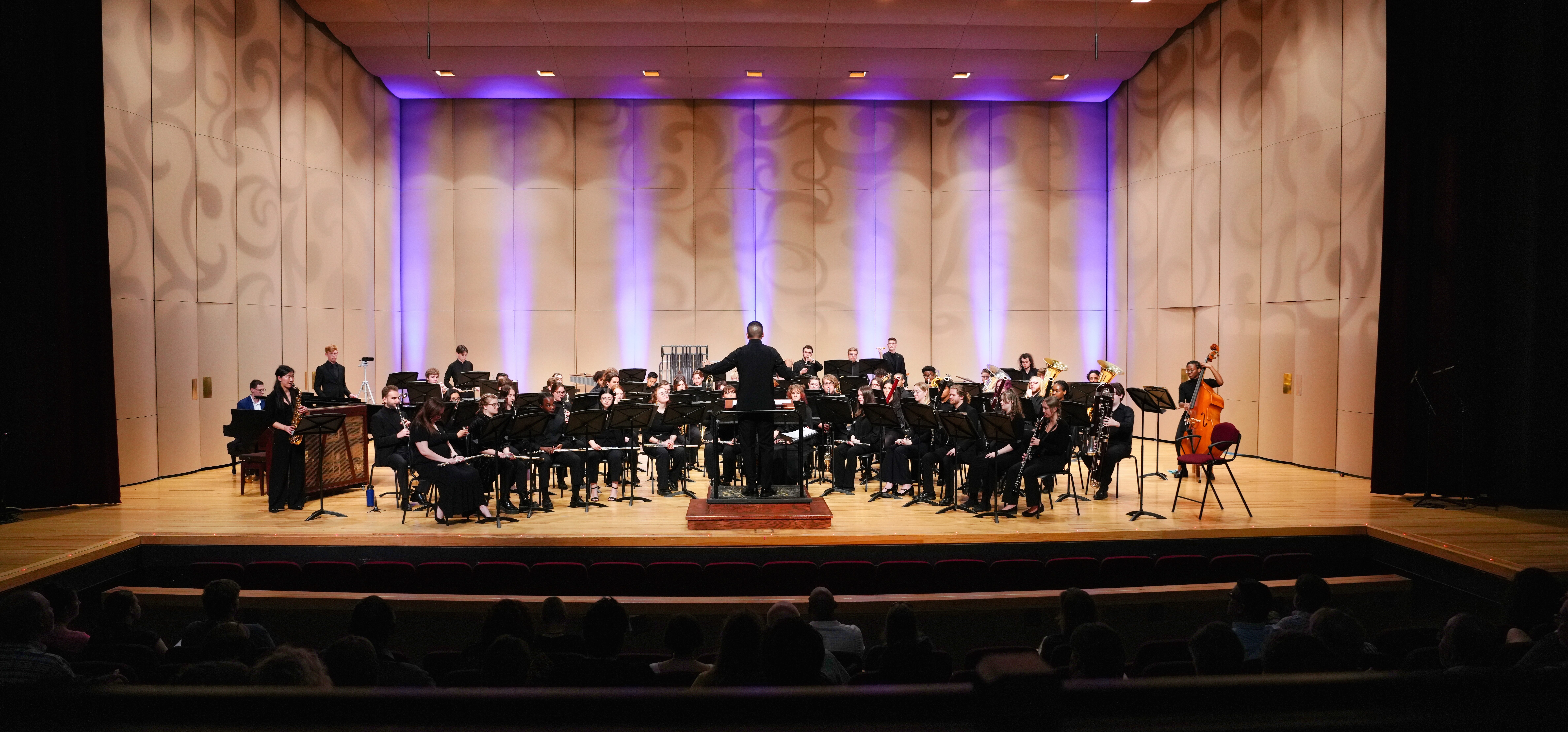No Tickets Required
Sunday | 3:00pm
Get Directions
Add to Calendar
10/05/25 @ 3:00pm

Live stream
BCR
Free
Music at Butler: Butler University Wind Ensemble
Schrott Center for the Arts
No Tickets Required
The Butler University Wind Ensemble opens its concert season with a work by Grammy Award-winning composer Gabriel Ortiz. Ortiz’s music has been commissioned and performed by the New York Philharmonic, London Philharmonic Orchestra, National Orchestra of Bretagne, BBC Scottish Symphony Orchestra, The Royal Liverpool Philharmonic, and the São Paulo State Symphony Orchestra with conductors including Esa Pekka Salonen, Louis Langrée, and Carlos Miguel Prieto, among others. Ortiz writes of her piece “Kauyumari”: “When I received the commission from the Los Angeles Philharmonic to compose a piece that would reflect on our return to the stage following the pandemic, I immediately thought of the blue deer and its power to enter the world of the intangible as akin to a celebration of the reopening of live music. Specifically, I thought of a Huichol melody sung by the De La Cruz family—dedicated to recording ancestral folklore—that I used for the final movement of my piece, Altar de Muertos (Altar of the Dead), commissioned by the Kronos Quartet in 1997. I used this material within the orchestral context and elaborated on the construction and progressive development of the melody and its accompaniment in such a way that it would symbolize the blue deer. This in turn was transformed into an orchestral texture which gradually evolves into a complex rhythm pattern, to such a degree that the melody itself becomes unrecognizable (the imaginary effect of peyote and our awareness of the invisible realm), giving rise to a choral wind section while maintaining an incisive rhythmic accompaniment as a form of reassurance that the world will naturally follow its course.”
We next turn our attention to the great German composer Johannes Brahms, and his work for chamber winds and choir, “Begräbnisgesang, Op. 13.” We will be joined by the Butler University Chorale, with maestro Eric Stark, to bring to life this solemn choral work–originally written for a funeral procession–that highlights a Renaissance text in the voices. The work concludes with a beautiful C major chord that symbolizes spiritual hope, a common theme for this concert program.
Following intermission, we embark on the landmark Symphony No. 4 by David Maslanka. Maslanka draws inspiration from the sweeping landscapes of western Montana and central Idaho, and the emotional legacy of Abraham Lincoln—particularly the funeral train scene accompanied by the hymn “Old Hundredth,” shaping themes of grief, transformation, and redemption. Originally written in 1993, the piece highlights the hymn setting of Old Hundredth in nearly every genre imaginable, from the simple hymn setting, to jazz, and everything in between. Like the compositional style of Charles Ives in “Variations on America,” Maslanka brings to life all the colors and virtuosity of the wind ensemble. The composer writes, “Out of chaos and the fierce joining of opposite comes new life and hope. From this impulse I used Old Hundred, known as the Doxology – a hymn of praise to God; Praise God from Whom all Blessings Flow; Gloria in excelsis Deo – the mid-sixteenth century setting of Psalm 100. I have used Christian Symbols because they are my cultural heritage, but I have tried to move through them to a depth of universal humanness, to an awareness that is not defined by religious label. My impulse through this music is to speak to the fundamental human issues of transformation and re-birth in this chaotic time.”
THIS PERFORMANCE IS FREE AND OPEN TO THE PUBLIC, NO TICKET IS REQUIRED.
Related Performances
November 04, 2025 | 7:30pm
November 05, 2025 | 7:30pm
November 09, 2025 | 2:00pm
November 11, 2025 | 7:30pm
November 12, 2025 | 7:30pm
